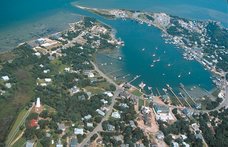Here's a press release I received in email recently about restrictions on nighttime beach driving for the next few months.
National Park Service News Release
FOR IMMEDIATE RELEASE: DATE: April 27, 2010
CONTACT: 252-473-2111, ext. 148
Nighttime Driving Restriction on
Cape Hatteras National Seashore Beaches begins May 1, 2010
Superintendent Mike Murray reminds park visitor that beginning May 1, 2010
all Seashore beaches are closed to off-road vehicles (ORVs) between the
hours of 10:00 p.m. to 6:00 a.m. in accordance with the court ordered
consent decree. Enforcement of the restriction will begin at midnight on
April 30, 2010. The 10:00 p.m. to 6:00 a.m. prohibition on beach driving
will remain in effect until November 15. Under the terms of the consent
decree the National Park Service (NPS) may issue permits between September
16 and November 15 to authorize night driving on Seashore beaches between
the hours of 10:00 p.m. and 6:00 a.m. and NPS retains the discretion to
limit night driving to certain areas or routes, based on resource
protection considerations. As occurred in 2009, just prior to September 16
NPS will announce the availability of the night driving permits and how to
obtain the permit. The permits will be available through November 15 at no
charge and with no limit on the number of permits.
Cape Hatteras National Seashore provides crucial nesting habitat for
loggerhead and green sea turtles, as well as the occasional leatherback.
Loggerhead and green turtles are currently listed as threatened under the
Endangered Species Act and leatherbacks are considered endangered. Sea
turtles typically lay nests at night between May and September, when adult
turtles come ashore to deposit around 100 ping-pong ball sized eggs into a
cavity in the sand. While nesting, these turtles are susceptible to human
disturbance on the beach. If a nesting turtle is disturbed, it may not
nest at all, or may lay a nest in a less than optimal area. Once laid,
eggs will incubate in the sand for 50-70 days before the hatchlings emerge
and make their way to the ocean. The hatchlings will use light cues in
order to find their way from their nest to the sea, making them vulnerable
to artificial lights from houses, piers, headlights, beach fires and
lanterns. Although studies vary, it is estimated that only 1 in 1000 to 1
in 10,000 hatchlings will survive to adulthood. Ten to 15% of the turtle
nests laid in North Carolina are laid on Cape Hatteras National Seashore
beaches. In 2009, one hundred and four (104) sea turtle nests were
documented at the Seashore.
The night driving restriction will be posted at all Seashore ORV access
ramps. The regulation is enforceable by NPS law enforcement rangers and
violators are subject to up to six months imprisonment and up to a $5,000
fine. To report violations, contact: Dare Central Communications:
252-473-3444. For further information, contact the Chief Ranger’s Office
at 252-473-2111.
-NPS-
Subscribe to:
Post Comments (Atom)

No comments:
Post a Comment